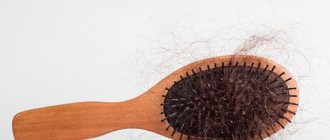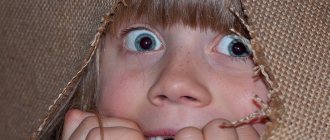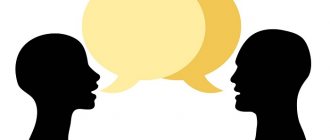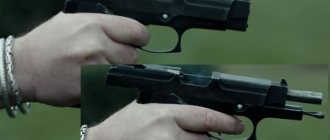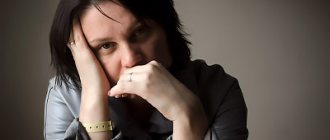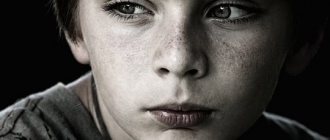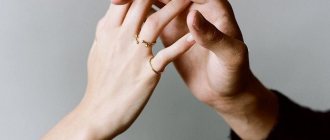Recently, it has become fashionable to use hidden meanings of colors in the interior. For example, it is believed that yellow improves mental activity - which means it is appropriate in the office, red excites - we paint the bedroom in it, and green calms and calms, so it is better for impressionable and nervous people to buy light green or emerald wallpaper.
Similar markers are used everywhere: black for funerals, white for weddings. In technical systems, red is alarm, yellow is attention, green is safety.
All this took shape over thousands of years and was interesting to ancient thinkers and doctors. This is how color therapy was born, which today is widely used in psychology, sociology, some branches of medicine and many other fields.
What it is
Color therapy is a method of alternative medicine that uses a person's exposure to variously colored light, which can cure both physical diseases and mental disorders, as well as affect mood, internal state and vital decision-making.
Despite attempts to find scientific explanations for the methods used and constant research, this direction is not officially recognized, since all experiments give too ambiguous results.
Despite the status of a pseudoscientific technique, color treatment is actively used in various fields: in reflexology, ophthalmology, pedagogy, gerontology, feng shui, psychology and psychotherapy. Some countries even have such a specialty - color therapists.
The second name of this direction is chromotherapy.
This is interesting. German psychologists, after conducting a series of studies, suggested that the shade of a sports uniform influences the decisions of judges in competitions. For several years, they analyzed the results of football matches and found that the team in the red uniform always receives fewer penalty cards and wins more often.
From the history
Ancient Egypt
IV century BC e. For the Egyptians, fruit juice was a drink of Ra, the sun god, who filled a person with positive energy. To saturate it even more, a precious stone of the same shade was placed in it and given to the sick, believing in their speedy recovery.
Persia
I century n. e. The medieval Persian scientist, philosopher, and court physician Avicenna advised his patients to choose specific colors for clothing, precious stones in jewelry, and painting walls in houses to heal the soul and body. Another interesting method in his therapy was the coloring of bath water.
Birth of Science
XIX century American August Pleasonton conducted large-scale experiments on the influence of color waves on plants, animals and people. Based on them, two other Americans, S. Pancoast and E. Babbitt, conducted additional research and concluded that color in tandem with light can be useful in the treatment of various diseases. Since then, color therapy began to develop by leaps and bounds and became popular among the people.
Ghadiali
1930s Indian scientist Ghadiali described the therapeutic effect that different color spectra have on human health. According to his theory, each organ of the body reacts sensitively to a certain shade, beginning to function more actively under its influence. It turns out that almost any disease can be cured without medications, just with color therapy.
Luscher
1950s People started talking about color therapy all over the world only after the Swiss psychologist Max Lüscher published his original color test, which is now included in almost all diagnostic methods. Over the course of several years, he conducted numerous experiments. According to the documents, he worked on 4,500 different shades and chose only 8 of them, which most clearly affect human health and psychology.
In his writings, he described in detail how people react to different colors. Red not only has a stimulating effect on the central nervous system, but also increases blood pressure and heart rate, and quickens breathing. Blue has the opposite effect. Luscher was the first to express the idea that this “language” is universal and independent of religion and nationality.
Domestic color therapy
In Russia, prominent representatives of color therapy are specialist in the field of psychodiagnostics L. N. Sobchik, psychologist I. I. Tsyganok, art therapist V. M. Elkin. The Luscher and Szondi tests were combined, the results were explained from the point of view of Pavlov’s teaching on the types of higher nervous activity, and were connected by Jung’s psychology. Methods for treating mental disorders have been developed using an integrated approach that combines color therapy and art therapy.
Interesting fact. One of the largest companies in the field of innovative and information technologies, Hewlett-Packard, conducted a study according to which text typed in green colors makes people make quick and positive decisions, and in red they doubt and make negative verdicts most often.
“Color therapy in the development of speech skills in older preschool children with general speech underdevelopment”
Dear colleagues!
We really want you to receive useful information that you can use in your work and share your experience with your colleagues.
We would like to begin our speech with the words of the French writer Antoine Exupery - “We all come from childhood.”
These words mean that many human problems originate from childhood. As children, we experience both failures and victories. Therefore, it is important to identify the problem in time in childhood so that it does not accompany us in the future.
We, as teachers, became interested in what innovative technologies would be effectively used in teaching without causing damage to the child’s inner world.
We have identified several technologies that, in our opinion, have a positive development on the psycho-emotional state of the child and improvement of speech skills.
Finger gymnastics;
Articulation gymnastics;
Breathing exercises;
Dynamic pauses;
Sand therapy.
But we give special preference to chromotherapy or color therapy.
Color therapy (chromotherapy) is a science that studies the properties of color, which
affects the human condition.
With the help of color, you can correct the psycho-emotional state of a child and increase the level of speech skills, so teachers working with children should have basic information about color therapy.
Red color
In color therapy, this color is used when a person’s vitality needs support or restoration, when it is necessary to fill a weakened body with new strength. Red sometimes helps combat severe stress. However, for overly emotional people, red in large quantities can be harmful.
Orange color
Promotes overall strengthening of the body, normalizes the activity of the endocrine system. This color gives a feeling of psychological freedom and reduces emotional instability. Orange improves digestion and increases appetite.
Yellow
It will help with a sad mood and constant passivity. It helps you learn to relate to events more easily and get rid of useless worries. This color has a positive effect primarily on people who are melancholic, prone to internal conflicts and passivity, and have communication problems.
Green color
Long-term exposure to this color makes the character balanced, at the same time refreshing and calming. This color increases vitality and promotes relaxation, and helps fight sleep disorders.
Green promotes stable growth of mental performance and concentration. This color helps fight excess weight and reduces appetite.
Blue
Expresses lightness, freshness and weightlessness. It can have a relaxing and calming effect on the child’s psyche. At the end of a hard day at work, a blue tint in the room can relieve stress, but do not forget that too much blue in the room can cause a feeling of alienation and coldness.
Blue color
Psychologists recommend blue color to people who need a sense of security. It creates a positive psychotherapeutic effect in melancholy, hysteria, and epilepsy. Shades of blue help with insomnia.
Blue color relieves pain in diseases of the skeletal and endocrine systems; it is recommended for diseases of the spine, brain, eyes, and inflammation of the sinuses.
It is believed that this color is associated with spirituality and can inspire.
Purple
It should be used when groundless doubts, mistrust, and suspicion arise. Thanks to its strong effect on the subconscious, violet helps fight deep-seated fears and various mental and nervous disorders.
Excessive influence of violet depresses the nervous system and can cause apathy.
White color
A symbol of purity and spirituality, healing from illnesses, it is the color of balance, goodness, and success. It will help you calm down and relieve internal tension. White color heals the central nervous system, helps restore the structure of brain tissue directly related to consciousness.
Black color
This color promotes composure, discipline, endurance and perseverance. But those prone to depression are not recommended to wear black, because in excess this color can be depressing.
Color therapy for children involves first identifying their favorite color and then filling as much of the space that surrounds it as possible with that color.
What colors do children usually choose? They choose bright, rich colors - red, yellow, green. This indicates that children are developing normally, they are interested in everything new and bright, they are dynamic and inquisitive. But the favorite white or black colors can indicate that the child is withdrawn and prefers loneliness. Color therapy is precisely aimed at returning the child to the happy, bright world of childhood and joy.
And now, dear colleagues, we invite you to play a little!
game exercise “Guess the color”: dear colleagues, I propose to play a little game “Guess the color”
• This is the most winter color. Tell me the correct answer. (White color)
• You will have the answer, - What color is the sun? (yellow)
• This color is darker than night, And you know it for sure. (black color)
• Color of grass and foliage. Will you name him? (green color)
• It is often called the sea. Who will take the color and guess? (Blue colour)
• This is the color of our blood. Which one, who is ready to say? (Red color)
"Treat the gnomes with fruits and vegetables"
Tasks:
Learn to distribute offers
Develop fine motor skills
Develop visual perception and thinking.
Strengthen knowledge of the color spectrum in children
Equipment: gnomes (yellow, red, green, blue, purple, orange); set of fruits and vegetables.
Progress of the game: The gnomes came to visit. They were very tired and hungry. Shall we treat them? What fruits and vegetables will you treat him to? The teacher invites the children to treat the gnomes with fruits (vegetables). What fruits and vegetables do you think gnomes like? For example, the yellow gnome loves bananas, the red gnome loves apples. Why do you think?
"Letter from Dunno"
Tasks:
Develop auditory perception.
Learn to match colors with objects.
Guys, do you remember who Dunno is?
Dunno sent a letter and asks to correct the errors in it. Shall we help him?
Progress of the game: The teacher reads a letter from Dunno to the children and asks them to find mistakes in it.
“Hello, dear guys! It's been a while since we've seen each other. I spent this summer in Sunny City. It was very hot, the blue sun was blazing. is everything correct in this sentence? There was not a single cloud in the green sky. All day long I swam in the orange river and sunbathed. Turned purple, just like a cucumber. But summer is over, autumn has come. The leaves on the trees turned blue and began to fall. Winter will come very soon, yellow snow will fall, everyone will put up red Christmas trees in their houses. After the New Year, I will come to visit you and bring you a treat - pink oranges and lilac bananas. Goodbye, your friend Dunno.”
"Words and Colors"
Tasks:
Enrich children's vocabulary with epithets.
Develop a sense of color in children.
Learn to see the connection between color and mood.
Equipment: illustrations or reproduction postcards depicting nature at different times of the year.
Progress of the game: The teacher shows the children an illustration and invites them to play a competition game to see who can come up with the most words:
- What is the sky like? (blue, barren, cloudless, high, etc.)
- When is the sky blue? (in summer, in the morning, when it’s warm, there are no clouds, on a clear day)
— When the sky is blue, the weather is good, it’s a clear sunny day, what’s our mood? (joyful, cheerful, good, etc.)
Game "Colorful Rain"
It will allow the child to consolidate ideas about the main colors of the rainbow and will contribute to the development of memory, thinking, logic and fine motor skills.
Finger exercises using multi-colored balls help develop finger dexterity; activate speech centers;
develop attention, memory, imagination; evoke positive emotions and create a positive atmosphere in the group.
"Twister"
This game helps very well to develop logical thinking, attention, speech, spatial orientation, and also reinforces the concept of color.
"Lay Out the Rainbow"
We lay out a white canvas or sheet of paper in front of the child and offer to lay out a rainbow of certain colors on it. Arc-shaped or straight-shaped strips of braid or cardboard of various shades are used as rainbow elements.
Colorful fairy tales
“Colored fairy tales” are successfully used in correctional work. Depending on the time of year, mood, lexical topic, the appropriate “colored fairy tale” is selected, for example, in the “yellow fairy tale” we are talking about autumn and everything that is yellow; similarly, “green fairy tale”, “pink fairy tale”, “blue fairy tale” are used " The text of each fairy tale corresponds to the title of the fairy tale, the lexical topic of the lesson or the selected fairy tale characters (travels, adventures, etc.).
Colored chips
When pronouncing words to the desired sound, children lay out multi-colored chips, which also contributes to the development of fine motor skills due to their small size.
Colored cups
Repeating the words of the speech therapist, timid children can put chips in cups with bright colors, and hyperactive children in cups of calm colors.
"Seven-flowered flower"
"Tsvetik-seven-tsvetik" (Flower of Seven Flowers) in front of the children. Children must determine what color each petal is on that flower, make a wish and take the petal and blow on it.
As you know, most of the individual work is devoted to automating the delivered sound. Depending on the automated sound, the speech therapist offers the child pictures of different objects, but of the same color. The desired sound is thus repeated many times, and the child gains interest in the process of working with color.
Thus, the use of chromotherapy or color therapy in correctional activities allows not only to have a positive effect on the psycho-emotional state of the child, but also increases the effectiveness of correcting speech disorders, mastering speech material, and has an impact on the formation of the child’s personality as a whole.
Why is it needed?
Each area will answer the question why color therapy is needed in its own way. For example:
- in psychology it is used for diagnostic measurements of a person’s subjective state;
- in psychotherapy - to clarify the diagnosis and treatment of mental disorders;
- in medicine - to improve the psychosomatic state of the patient;
- in ophthalmology - for the diagnosis and treatment of visual pathologies;
- in gerontology - to improve the quality of life of older people both physiologically and psychologically.
Many educational institutions and ordinary companies use color therapy as a health-saving technology. Despite its pseudoscientific nature, many people know that green is conducive to trust and calms, and has a beneficial effect on the central nervous system, which is why offices and classrooms are often painted in one of its shades. But red provokes quarrels, attacks of hypertension and tachycardia, and is too stimulating - so you are unlikely to see it in schools and kindergartens (unless it is in the softest shades).
The main tasks of color therapy:
- increasing the level of communication, emotional responsiveness;
- enrichment of sensory and emotional experience;
- formation of self-control skills;
- improving the psychological microclimate in the team;
- stimulation of intellectual activity;
- creating a special mood;
- psychophysical relaxation, reduction of emotional, mental and bodily stress;
- correction of psycho-emotional state;
- treatment of mental disorders and some somatic conditions.
With the world - one by one. In northern countries, where there is a catastrophic lack of light, people are saved from depression with the help of color therapy. Namely: they paint houses in bright and different shades.
Indications
Color therapy is used in the treatment of diseases of mental and somatic origin. The indications are:
- migraine;
- insomnia, nightmares;
- asthenia;
- allergies, skin diseases;
- weakened immune system;
- rehabilitation after prolonged illnesses and operations;
- nervous tics;
- pathologies of the visual system;
- enuresis, constipation;
- anorexia, bulimia and other eating disorders;
- personality and behavior disorders;
- interpersonal conflicts, social maladjustment, deviant behavior.
Color therapy is offered to patients of health centers, sanatoriums, sports institutions, and psychological relief rooms. Most often it is used by psychologists to relieve stress. It is enough to sit in a green room and drink tea from a green mug, and anxiety and tension noticeably weaken.
Did you know that... color therapy can cure a child from enuresis? To do this, it is recommended to draw only with pencils and felt-tip pens, removing everything that spreads (paint, gouache, water), and replacing the yellow color of moisture with brown - an indicator of dryness.
Indications for color pulse therapy
Regular health-improving sessions of color pulse therapy provide a pronounced effect in the treatment of myopia, farsightedness, computer syndrome, the initial stages of cataracts and glaucoma. That is, the direct indications for prescribing this procedure are:
- Computer syndrome;
- Spasm of accommodation;
- Dystrophic changes in optic nerve fibers;
- Age-related macular degeneration;
- Amblyopia, presbyopia;
- Myopia and farsightedness of varying degrees;
- Astigmatism;
- Glaucoma and cataracts (initial stages).
In addition, with regular visual color stimulation, psycho-emotional correction and improvement of brain function are ensured. Stress is relieved, emotional state improves, sleep normalizes. Color pulse effects bring a feeling of relaxation and comfort, elevate mood, improve concentration, learning and performance.
Meaning of colors
In psychology and psychotherapy
White
Sets you in a positive mood. Expresses a kind attitude. Stores energy. It lifts your spirits.
Turquoise
Calms, gives confidence, refreshes, relieves irritation, fatigue, stress. Improves mood. Helps you find the right words and make contacts. It is chosen by people with a rich imagination, but a complex character.
Blue
Calls for patience and tolerance. Provokes passivity. Helps improve intellectual abilities. Contraindicated for manipulators.
Yellow
Clears negative emotions. Promotes the manifestation of the creative component. Activates mental activity. Instills confidence and perseverance before important events and decisions. Contraindicated for overly excited people.
Green
Calms, calms, relaxes, helps to achieve inner harmony. Inspires optimism. Contraindicated for those who are lethargic and indecisive.
Brown
Promotes physical and psychological stability. Relaxes. Inspires career growth.
Red
Excites, invigorates, tones the nervous system, warms. May cause an emotional explosion. Instills self-confidence. Structures emotions and thoughts. Contraindicated for aggressors.
Orange
Gives strength and energy. It is chosen by positive and purposeful people. Contraindicated for lazy people and narcissists.
Pink
Relaxes, puts you in a romantic mood. Used in the treatment of depressive conditions.
Blue
Relieves worries, nervous tension, obsessive thoughts. Promotes the development of intuition. Pain reliever both physiologically and mentally. Helps fight addictions. Contraindicated for seasonal depression.
Lilac
Allows you to penetrate into the subconscious and understand yourself. Provokes sensuality.
Violet
It puts you in a philosophical mood, awakens the desire to speculate about the frailty of existence, and instills wise thoughts. Arrogant people choose him. Contraindicated for alcoholics and severe mental disorders.
Black
Helps you concentrate. Improves thought processes. Exacerbates depression.
In medicine
- White - excretory systems of the body, nervous system;
- turquoise - leather;
- blue - body temperature, blood pressure, infections, muscular system, appetite, genitourinary system;
- yellow - digestion, solar plexus, central nervous system, vitality, brain;
- green - cardiovascular system, healthy sleep, vision, lungs;
- red - blood circulation, metabolism, immunity;
- orange - endocrine glands, respiration, reproductive system, hormonal levels;
- pink - heart;
- blue - endocrine system, musculoskeletal system (treats rheumatism), throat (helps cope with sore throat);
- purple - blood, bone tissue, thyroid gland.
Holographic color therapy
A popular branch of general color therapy. According to it, a person’s health, body, behavior, emotions and feelings are controlled by the energy-information field - the aura. To change your life for the better, it is enough to influence it with the language of flowers:
- blue (Vishuddha chakra) - speech, frankness, sincerity, trust;
- yellow (Manipura chakra) - digestion, metabolism, vigor, good mood;
- green (Anahata chakra) - color of the soul, liberation from grievances, forgiveness;
- red (Muladhara chakra) - desire to live, self-confidence;
- orange (Svadhisthana chakra) - harmony in relationships, rejuvenation, attractiveness to the opposite sex;
- blue (Ajna chakra) - self-confidence, intuitive thinking;
- violet (Sahasrara chakra) - connection with the Cosmos, intuition, comprehension of the essence of things, insight.
The main scientific and practical center of holographic color therapy is located in Israel.
Color therapy - the help of the rainbow
In simple terms it looks like this: Each color emits different frequencies of vibration, just like the cells of the human body. Therefore, certain colors affect certain parts of the body. If we are healthy, then this frequency is constant. When we are sick, it is disrupted, and only the right colors help us return to normal life. In addition, many of our traits and functions - growth, sleep, body temperature, sexual desire, digestion speed - depend on the pituitary gland, which is a very light-sensitive gland.
Methods
There are different methods of color therapy that are used both by professionals in psychology, psychotherapy, medicine, and by ordinary people at home:
- color diagnostic tests;
- concentration on one color that has a special effect on the patient;
- color lithotherapy - selection of stones of the appropriate shade to eliminate anxiety and restore internal balance;
- Feng Shui: selection of shades for the interior of the house and offices;
- fashion industry: wearing clothes in appropriate colors;
- dietetics: table setting in the right color scheme (which stimulates or suppresses appetite);
- charged water: a jar of water is wrapped in paper of a certain color and placed in sunlight for several hours.
In kindergartens, color therapy actively uses such a method as coloring, which all children love. Firstly, this is a kind of diagnostic that allows you to monitor the child’s mental state. Secondly, by adjusting the drawing tools (pencils or felt-tip pens, gouache or crayons, gel pens or watercolors) and the suggested shades, you can help your child overcome many difficulties.
How to use color therapy?
One way to put color therapy into practice is to choose a color that gives you the energy you need and begin to “absorb” it in various ways. For example:
- by eating foods of the color you want;
- wear clothes and jewelry of this color;
- drink drinks from colored glass bottles;
- take baths with the addition of aromatic oils and other products of a certain color;
- visualize images of the required color.
The most universal effect of color therapy can be observed by taking baths with additives of the desired color. This way you can have an optimal impact on both your physical and mental state.
Devices
Despite the lack of recognition by official medicine, color therapy is actively used in health institutions. All kinds of medical devices are created and used that affect individual organs with a certain tint spectrum.
Glasses
Equipped with pulse emitters. They transform rhythmically pulsating light into brain structures, improving the bioelectrical activity of neurons and functional systems of the body. They have a wide range of applications.
ATsL-01-Strela, ATsT-02-M, ATsT-03-M
Devices used in ophthalmology. Improves visual functions. Good for the eyes.
Bioptron
A device used in physiotherapy and reflexology. It is a lamp that emits polarized light of a certain color spectrum. It is directed to the painful part of the body, stimulating it.
Geska-Polycolor-Mage
Physiotherapeutic device with a magnetic attachment for color and light therapy. It affects biologically active points and zones with light of various color spectra.
The essence of the technique
The theory of color pulse therapy is based on the impact of artificial visible light pulses on the retina, the visual analyzer of the eye and indirectly on the central nervous system. The method is physiological, non-invasive, lacks allergic reactions and is highly effective.
Color pulse correction (therapy), as a method of restoring vision and preventing the development of many eye diseases, as well as visual impairments, has been widely used and recognized by ophthalmologists.
This is a specific gymnastics that strengthens the muscles of the eyeball, as well as activating the processes of metabolism and microcirculation in the tissues of the organ of vision.
Tests
In psychology, various color tests are used to determine the patient’s internal state:
- Pfister color pyramids;
- Freeling test;
- color relationship test (CRT) by Bazhin and Etkind.
But the most popular was and remains the Luscher test. Available in two versions.
Short version
Working with a table of 8 squares, painted in specific colors: gray, dark blue, blue-green, red-yellow, yellow-red, red-blue or purple, brown, black. It is most often used in psychology and pedagogy.
8 squares of Luscher dough
Full version
Working with eight color tables. It is called the “Clinical Color Test” and is used in advanced cases in psychology and in the diagnosis and treatment of mental disorders and disorders in psychotherapy.
The task facing the patient is to arrange the colors according to the degree of their subjective pleasantness in descending order.
Required conditions for conducting the test:
- natural light, but direct sunlight should not fall on the handout;
- all tables are printed on sheets of paper; they cannot be shown in the form of a presentation or on a computer;
- preliminary work is carried out with the patient: he is warned that he needs to distract himself from social stereotypes and proceed only from personal feelings.
Results:
- understanding what is really happening to a person;
- clarification of the psychotherapeutic diagnosis;
- individual personality assessment, its quick and in-depth analysis;
- recommendations on how to avoid psychological stress and improve your health (including physical).
The main criticism of the Luscher method is that its results do not coincide with the Minnesota Multidimensional Personality Inventory (better known as MMPI) by S. Hathway and D. McKinley. This test is by far the most studied, one of the most popular and widely used in clinical practice.
Application in practice
Color therapy is a universal technique that has no age restrictions. In psychology, it is used for children, adults and the elderly.
For children
Color therapy is actively used in kindergartens and schools in order to clarify the child’s problems related to social adaptation and personality development. At the first stage, he is provided with a list of basic vital priorities, which are selected individually for his age.
List for preschool children:
- Mother;
- dad;
- stepfather;
- teacher;
- Brother;
- sister;
- grandmother;
- grandfather;
- neighbours;
- toys, etc.
List for children 7-11 years old:
- parents;
- Friends;
- a pet;
- hobby;
- study, etc.
List for teenagers:
- family;
- money;
- studies;
- Friends;
- recognition in society;
- University admission;
- work, etc.
How is diagnosis carried out:
- The child places the concepts from the list in places depending on the degree of their importance for him personally.
- 8 squares from a short version of the Luscher color test are laid out in front of the child.
- The child selects the appropriate color for each word from the list, based on his personal preferences. Shades can be repeated, there are no restrictions.
- The child’s choice is recorded in the protocol.
- A half-hour rest is organized (lunch, games, distracted communication).
- Again, 8 Luscher squares are laid out. The child makes a list of them from the most pleasant to the least favorite.
When processing the results, conclusions are drawn about whether the two lists compiled by the child - conceptual and color - coincide. It is believed that the first is built under the influence and pressure of society (students can write in the first place parents whom they are afraid of, or school, which they may hate because of the forced obligation to go to it), and the second - based on a true personal attitude to these concepts .
Thus, color therapy helps to understand what is really happening to the child. Based on this, psychologists working in kindergartens and schools build training programs with the most problematic children.
For children with disabilities
There are projects on the use of color therapy to work with children with disabilities. They are based on the assumptions that certain colors are transmitted through the brain:
- normalize muscle tone;
- neutralizes negative emotions;
- improve intellectual abilities;
- develop communication skills;
- improve speech, hearing and the musculoskeletal system.
Within the framework of these projects, group techniques are used in working with children with disabilities:
- "Magic colors". Mixing them and getting a new shade.
- "Magic Bedspreads" The child and the teacher cover themselves with a bright orange scarf, which improves their mood, sit huddled together, holding hands, looking into each other’s eyes.
- “Color fairy tales”: blue, green, white, yellow, etc.
The effectiveness of such programs has not been scientifically proven.
For the elderly
The “All Colors of Life” program, developed on the basis of color therapy for elderly citizens and the disabled, is being actively implemented in nursing homes and sanatoriums. Her tasks:
- formation of motivation to maintain health;
- psychological support through training in new healing techniques;
- sociocultural rehabilitation.
During the implementation of the program, the following color therapy techniques are used:
- color shower;
- colored baths;
- color bar (charged drinks);
- culinary color therapy;
- active creative activity.
The methods of “Color diagnostics of emotional states” and “Color sociometry”, Luscher test are used.
Color pulse therapy at MGC
At the Moscow Eye Clinic, specialists have developed and successfully used special color pulse vision therapy programs. The procedures are carried out using the most modern equipment (including Visotronic M, Speckle M, Monobinoscope devices) in combination with drug therapy, and can be prescribed to both adults and young patients. Upon completion of the necessary diagnostic studies, an individual hardware treatment regimen is selected for each patient, which is adjusted if necessary in accordance with the current results. Color pulse therapy sessions are carried out under the supervision of highly qualified specialists, do not cause pain or discomfort, and do not require the patient to limit his usual lifestyle.
In the medical department, everyone can undergo examination using the most modern diagnostic equipment, and based on the results, receive advice from a highly qualified specialist. The clinic provides consultations to children from 4 years old. We are open seven days a week and work daily from 9 a.m. to 9 p.m. Our specialists will help identify the cause of vision loss and provide competent treatment for identified pathologies.
You can find out the cost of a particular procedure or make an appointment at the Moscow Eye Clinic by calling 8 and 8 (499) 322-36-36 (daily from 9:00 to 21:00) or using the online registration form .

